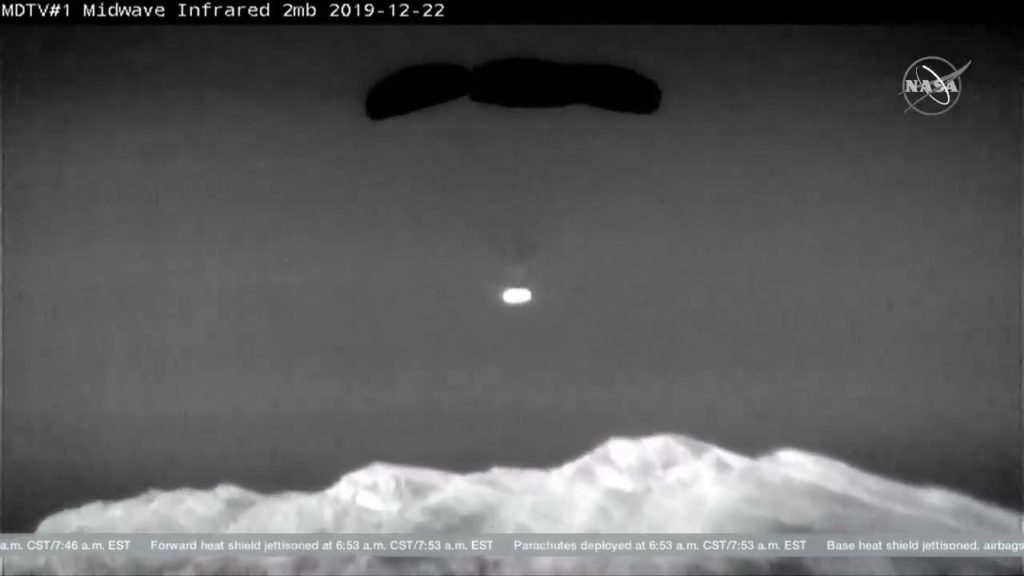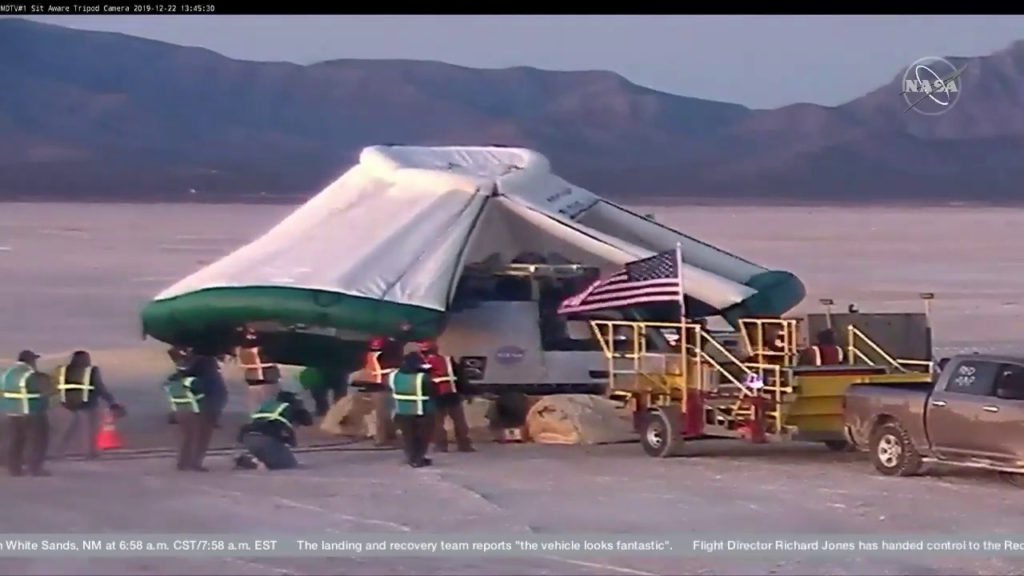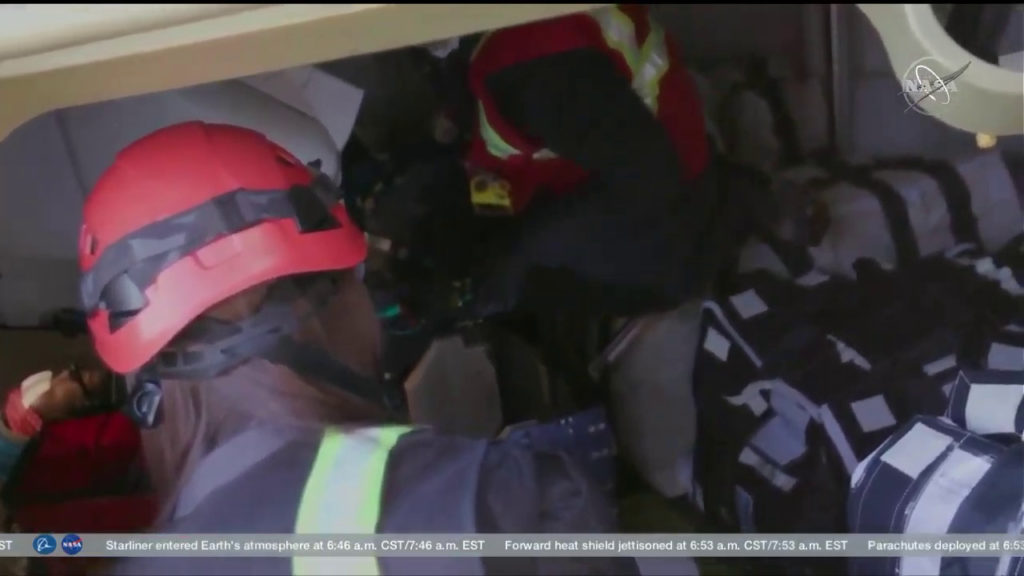
NM landing 
Recovery work 
Rosie is safe! 
Sunita Williams, commander of USCV-2, named the capsule “Calypso” (NASA TV)
NASA and Boeing had cause to celebrate this morning as the Starliner CST-100 Orbital Flight Test came to an end at 1258 UT (0558 MST) 22 Dec 2019, with an early but normal landing at White Sands, New Mexico. Though the mission failed to reach the International Space Station, Starliner’s landing is a qualified first for the United States: Until today, no US space mission had successfully landed on firm ground without wings – though this is routine for Russian Soyuz missions. It is also the first time a crew-rated orbital spacecraft has landed at White Sands since STS-3 in 1982.
After winding past Australia in its final 261.5 x 246.4 km orbit, the Service Module performed a deorbit burn, then jettisoned into the Pacific Ocean. The Crew Module continued its northeasterly descent over Baja California, then into New Mexico. Both drogue parachutes deployed on time, slowing Starliner to subsonic velocity. All three main parachutes came out at the appropriate moment, bringing the vessel to its glacial landing pace of 8.5 meters per second. Finally, underneath Starliner, six landing airbags inflated to cushion its landing in the frigid desert dawn.
Upon arrival, Boeing’s ground teams, staffed from all over the United States, ran through all the standard procedures for vessel and crew recovery, from hydrazine approach safety, to static electricity grounding, to hatch opening one hour and two minutes after landing. The effort including staging a medical truck, as would be used to check the astronauts after an actual crewed mission.
As the vessel’s hatch opened and the cameras peered over the shoulders of the recovery crew, alongside numerous other well-secured bundles of undelivered cargo, the flight’s crash test dummy, Rosie the Rocketeer, could be seen strapped tightly into the commander’s seat. Anyone else who would have been there would have been just fine.
The post-launch press conference emphasized the landing as the primary goal of the Orbital Flight Test, and framed the mission as a substantial success. While all parties emphasized the need to conduct a complete review of flight data, Jim Chilton of Boeing said that as of Sunday morning, “60 percent” of the mission checklist had been completed, and proposed that, with the assumption that when data recovery from the Starliner is complete, “80 to 90 percent” of mission objectives will be met.
Missing the ISS was the mission’s most substantial loss. Further incomplete goals included tests of all components of the VESTA docking sensors, as well as failure to deliver time-sensitive mission cargo, including Christmas presents. Boeing and NASA will each take back their part of the recovered cargo, some of which may be flown to the ISS on later missions. The presents aboard will be given to astronauts when they return to Earth.
Boeing also flagged two minor problems during entry: a response delay in one of three navigation computers, which is of lesser concern as the system is designed to work with two out of three results, and the third was merely delayed, rather than incorrect or offline. The second issue was an error reported for nitrogen ullage in the crew module thruster system, which ground crews will attempt to trace to either a faulty sensor or an actual failure to close a valve.
The vessel will now spend two weeks in transit to Cape Canaveral, where it will be refurbished for its next mission, to be commanded by astronaut Sunita Williams, who gave a name to this particular Starliner capsule: Calypso, after the RV Calypso, French oceanographer Jacques Cousteau’s surface flagship. The USCV-2 mission will honour and continue that legacy of exploration, once another Starliner capsule has proven the system safe in crewed flight.

One thought on “Starliner Calypso earns name with safe and accurate landing”
Comments are closed.